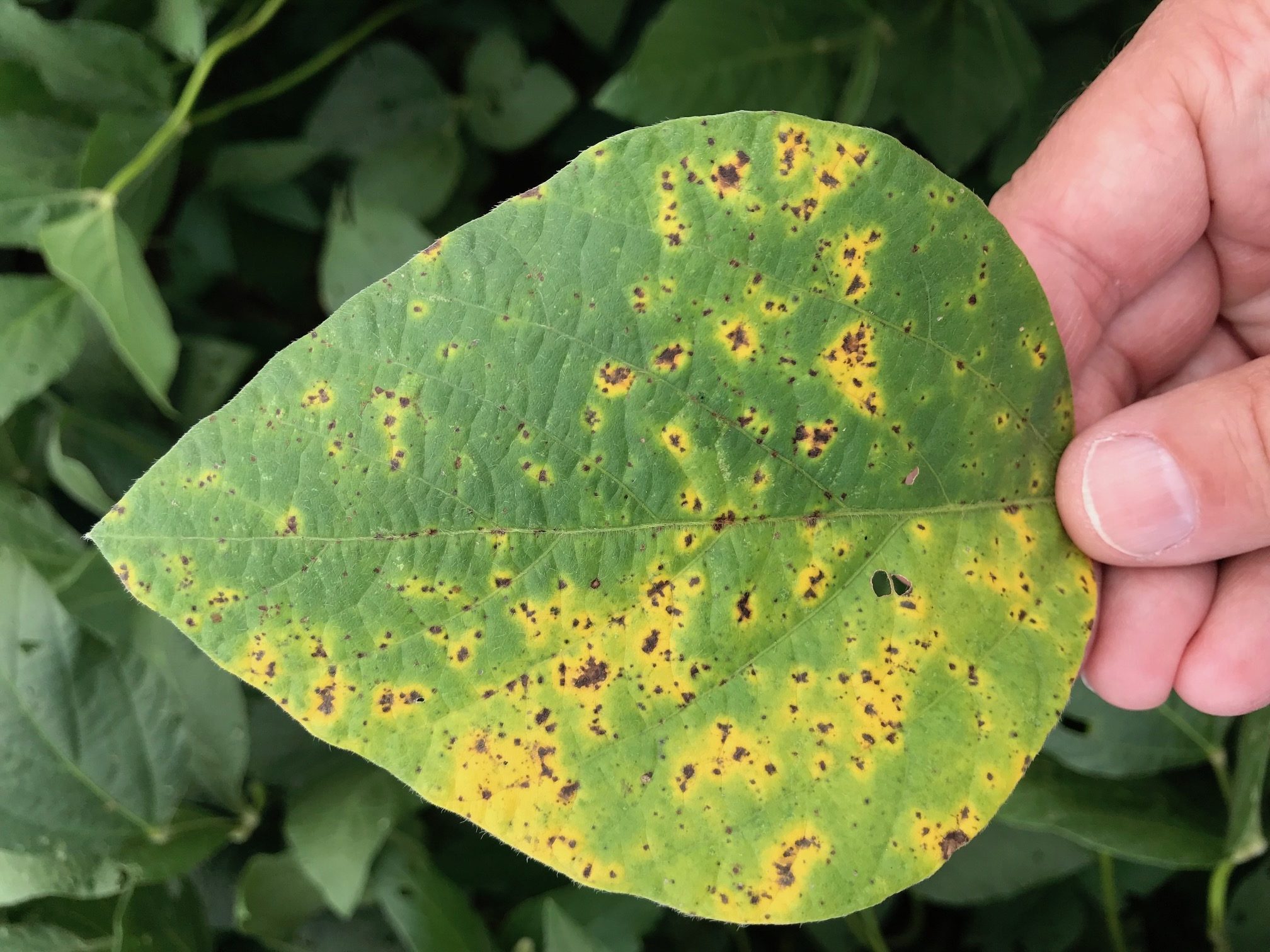Crop Production

Septoria brown spot is one of the more common foliar diseases observed in soybean fields in Alabama, typically appearing as dark-brown spots on lower leaves in the canopy. The fungal pathogen survives on soybean residue, so a rotation of soybean after soybean will increase incidence of the disease. Temperatures between 60° F to 85° F in combination with wet weather favor development of brown spot. Whereas hot, dry weather slow progress in the field.
Symptoms include small, irregular, dark-brown spots often surrounded by yellowed tissue occur primarily on leaves. The disease will slowly progress up the plant canopy. Septoria brown spot can be confused with soybean rust early in its development. It is important for producers to check for typical soybean rust pustules on the lower leaf surfaces, as rust is much more damaging than Septoria.
Septoria brown spot can also be confused with symptoms of bacterial blight, though blight symptoms first appear on new leaves in the upper canopy. Brown spot rarely causes significant damage to a field. Extension plant pathologists have never suggested spraying a fungicide for this disease. However, yield loss of about 5 percent has been reported in severely affected fields in the Midwest. Cultural practices such as tillage and crop rotation to non-legume crops can help reduce the incidence of Septoria brown spot.

